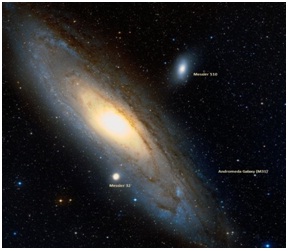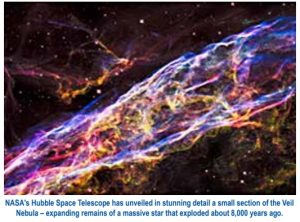Universe Expanding Faster than it Should be
The Universe has repeatedly been observed to behave unexpectedly – the more astronomers find out about it, the more wrong it appears – in ways that have forced scientists to wonder whether our assumptions about it had been wrong.
The universe is expanding considerably faster than it should be, NASA has confirmed. The space agency’s Hubble Space Telescope shows that it is growing about 9% faster than had been expected, based on the trajectory it started with shortly after the Big Bang, according to astronomers.
 While such a discrepancy had already been suggested, the new measurements reduce the chance this is a mistake to just one in 100,000. Such a confirmation could require astronomers to find new physics theories to explain the universe‘s strange behavior.
While such a discrepancy had already been suggested, the new measurements reduce the chance this is a mistake to just one in 100,000. Such a confirmation could require astronomers to find new physics theories to explain the universe‘s strange behavior.
“This mismatch has been growing and has now reached a point that is really impossible to dismiss as a fluke. This is not what we expected,” says Adam Riess, Bloomberg Distinguished Professor of Physics and Astronomy at Johns Hopkins University, Nobel laureate and the project’s leader.
The speed of the universe’s expansion, known as the Hubble constant, is a central part of Physics and our understanding of the universe. But it has repeatedly been observed to behave unexpectedly – the more astronomers find out about it, the more wrong it appears – in ways that have forced scientists to wonder whether our assumptions about it had been wrong.
 The new study confirms that speculation, and requires further work to explain how exactly the universe is growing.
The new study confirms that speculation, and requires further work to explain how exactly the universe is growing.
The research saw Professor Riess and his team analyse light from 70 stars in a galaxy near ours, known as the Large Magellanic Cloud, using a new method that allowed them to capture the stars quickly.
The stars they observed are called Cepheid variables, and change brightness predictably, allowing them to be used to measure intergalactic distances.
The new method allowed the researchers to measure many more of those stars far more quickly.
Normally, Hubble can only look at one star each time it takes one of its 90-minute orbits around Earth, but the new method allowed it to see dozens in that same time.
[Courtesy: https://www.independent.co.uk/]

